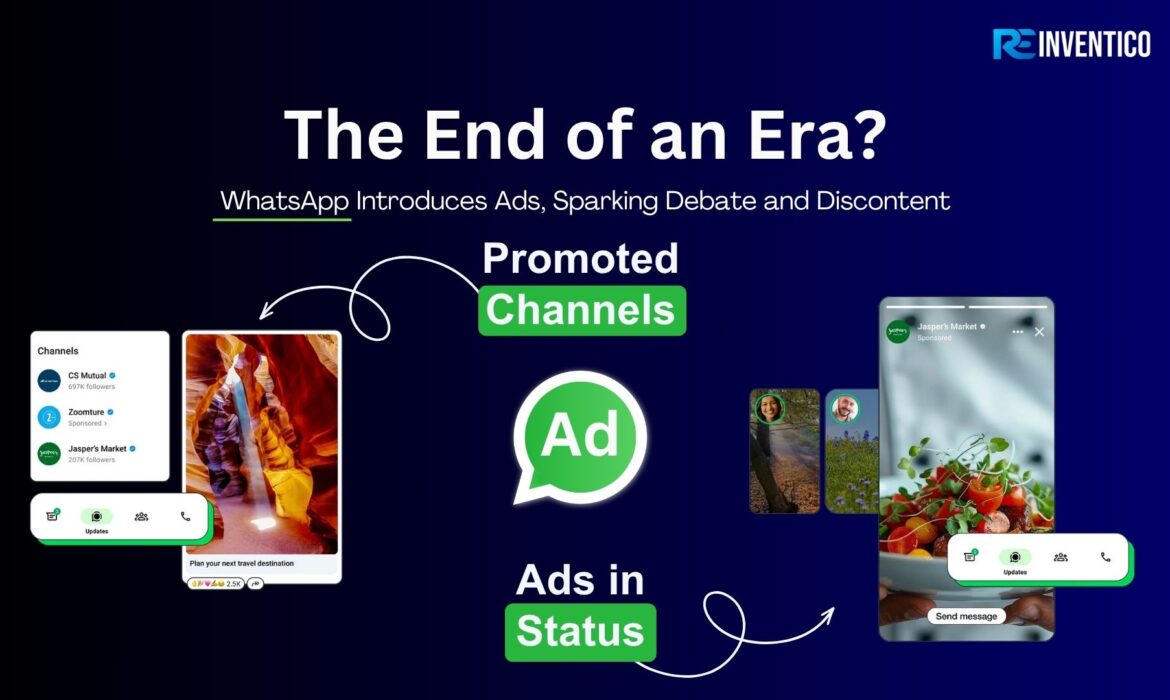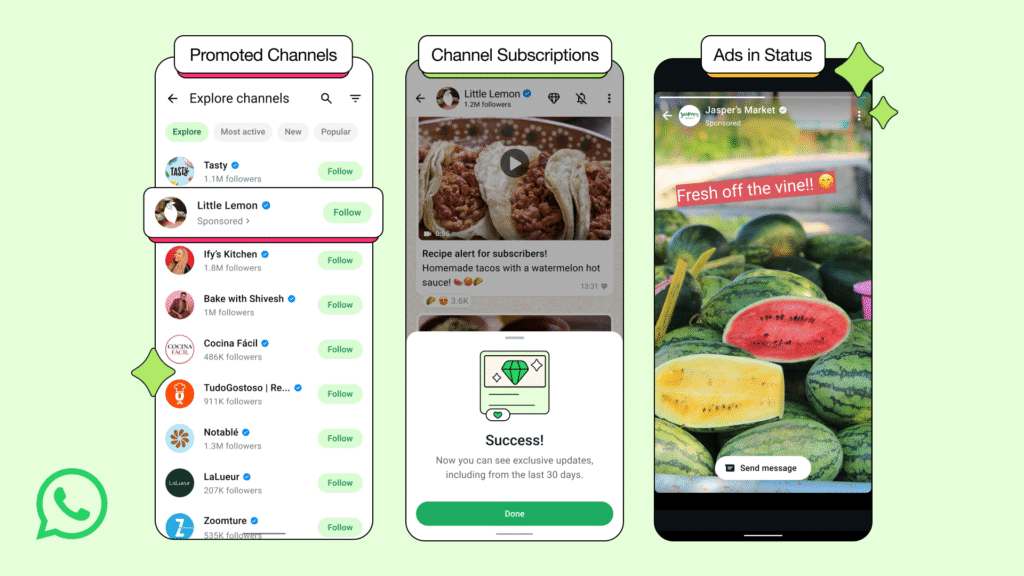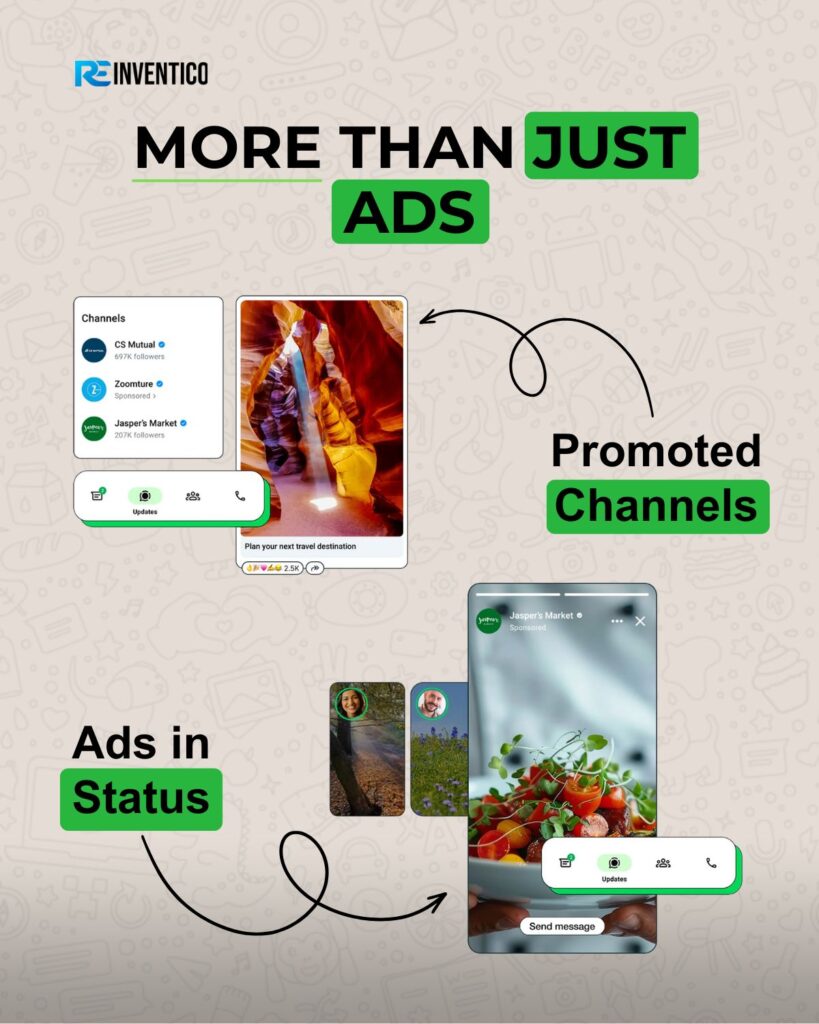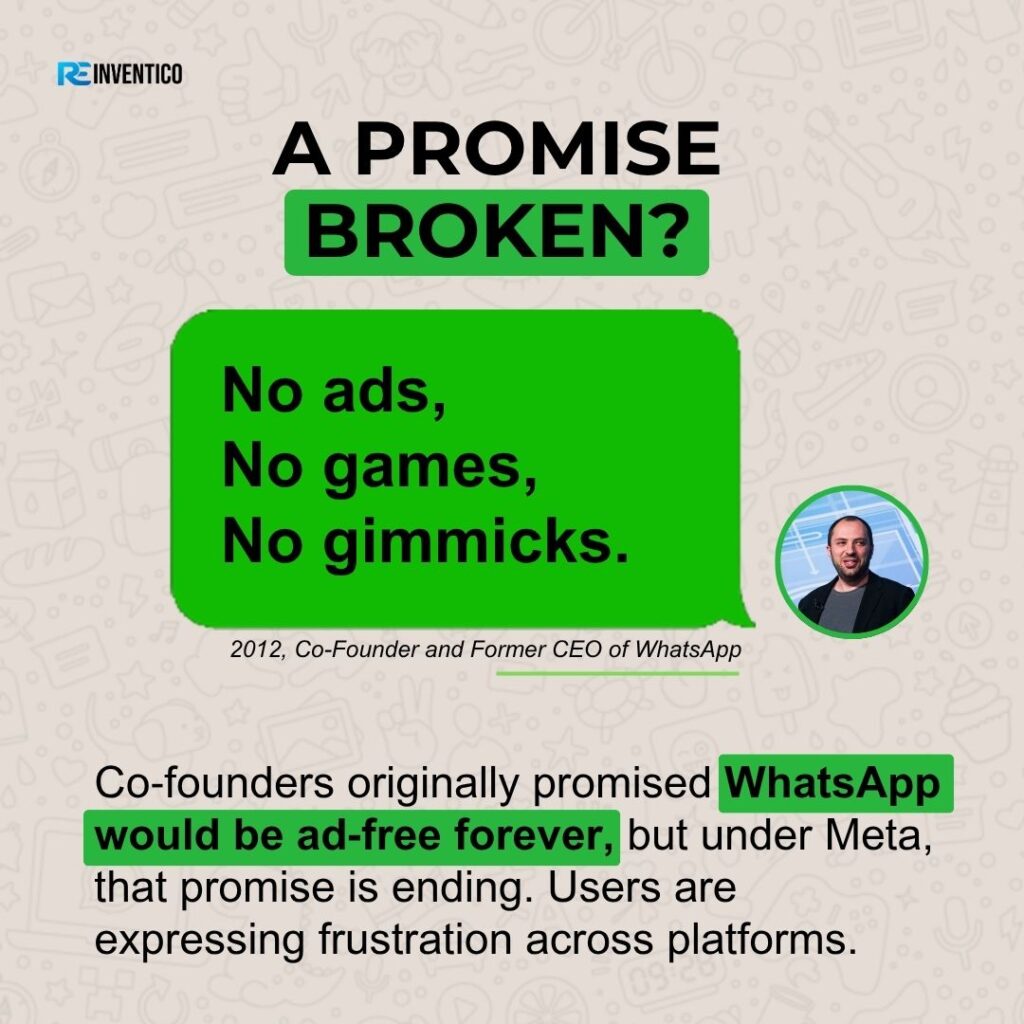
For over a decade, WhatsApp stood as a rare bastion of ad-free communication in the ever-expanding digital realm. Its commitment to a clean, private, and uncluttered interface was a significant differentiator, setting it apart from its data-hungry siblings, Facebook and Instagram. However, as of June 16, 2025, that distinctive chapter officially closes. WhatsApp is now rolling out advertisements and new monetization features, a seismic shift that has already ignited a passionate debate among its immense global user base of over 3 billion.
At Reinventico, we are dedicated to dissecting the intricacies of technological transformations and their profound impact on user experience, business models, and overarching digital strategy. This pivotal development from WhatsApp represents not just a change in an app, but a significant strategic reorientation within Meta’s broader vision for its ecosystem.
The Big Reveal: Where and How Ads Will Appear

Let’s address the most pressing question first: Will your intimate private conversations be interrupted by intrusive banners? Meta has unequivocally stated that end-to-end encrypted personal messages, voice calls, and group chats will remain inviolably ad-free. This is a critical assurance, aimed at preserving the core privacy and utility that billions rely upon daily.
However, the monetization drive is targeting an equally massive, highly engaged space: the “Updates” tab (formerly known as “Status”). This section, which functions remarkably similarly to Instagram Stories, is a daily destination for a staggering 1.5 billion people worldwide. Here, you can now expect to see sponsored content interspersed organically with status updates from your contacts and content from the various Channels you follow.
Beyond Traditional Ads: Meta’s Broader Monetization Playbook
Meta’s strategy for WhatsApp extends beyond simple ad placements in the Updates tab. It’s a multi-pronged approach designed to unlock the immense commercial potential of the platform:

- Ads in Updates (Status): As mentioned, these will be visual, full-screen advertisements appearing between user statuses and Channel updates. They are designed to feel native to the “Stories” format familiar across Meta’s other apps.
- Promoted Channels: Businesses and creators seeking to expand their reach will now have the option to pay to enhance the visibility of their Channels within WhatsApp’s directory. This allows for discoverability beyond direct invites.
- Channel Subscriptions: Tapping into the burgeoning creator economy, WhatsApp will introduce optional paid subscriptions for Channels. This enables creators, publishers, and businesses to offer exclusive content or early access to subscribers for a monthly fee, directly monetizing their engaged audience within the app.
Meta insists that ad targeting will be meticulously crafted using non-sensitive signals such as your geographical location (country/city), language preferences, and the specific Channels you choose to follow. They reiterate their commitment: “We will never sell or share your phone number to advertisers. Your personal messages, calls and groups you are in will not be used to determine the ads you may see.” For users who have opted into Meta’s central Accounts Center, ad preferences from Facebook and Instagram may also inform the WhatsApp ad experience.
The Storm of User Discontent: “Enshittification” in Action
The introduction of ads, despite Meta’s careful positioning, has been met with significant disappointment and outrage across various social media platforms. Users are vocalizing a sense of betrayal, often invoking the term “enshittification” to describe what they perceive as a platform slowly degrading its core user experience in pursuit of increased profit.
This potent neologism, coined by technology author and activist Cory Doctorow, describes a multi-stage process: “First, platforms are good to their users; then they abuse their users to make things better for their business customers; finally, they abuse those business customers to claw back all the value for themselves. Then, they die.” (Source: Cory Doctorow’s “The ‘Enshittification’ of TikTok” – Note: While a specific article might be difficult to pin down, Doctorow’s blog “Pluralistic” is the primary source for this concept. You can also refer to the general explanation on Wikipedia).
Many users feel that WhatsApp, once a symbol of simplicity and privacy, is now falling victim to this cycle. The depth of this sentiment is profoundly rooted in WhatsApp’s founding ethos.
The Echo of a Promise: Jan Koum’s Ad-Free Vision
A significant part of the current user backlash stems directly from WhatsApp’s historical stance. In a widely cited blog post from June 18, 2012, titled “Why We Don’t Sell Ads,” WhatsApp co-founder Jan Koum passionately articulated the company’s anti-advertising philosophy. He famously stated:

“Advertising has us chasing cars and clothes, working jobs we hate so we can buy shit we don’t need.”
“Remember, when advertising is involved you the user are the product. At WhatsApp, our engineers spend all their time fixing bugs, adding new features and ironing out all the little intricacies in our task of bringing rich, affordable, reliable messaging to every phone in the world. That’s our product and that’s our passion. Your data isn’t even in the picture. We are simply not interested in any of it. When people ask us why we charge for WhatsApp, we say ‘Have you considered the alternative?'”
Koum, along with co-founder Brian Acton, famously championed the motto “No ads! No games! No gimmicks!” Both eventually departed Meta (then Facebook) reportedly due to disagreements over privacy and monetization strategies following the company’s $19 billion acquisition of WhatsApp in 2014. This long-held promise, now broken, fuels a deep sense of betrayal among the app’s most loyal users.
Implications for Users: A Shifting Landscape
For the everyday WhatsApp user, this means a subtle but undeniable shift in their overall experience. While personal chats remain sacred, the “Updates” tab, a space often used for casual sharing, will now carry a commercial undertone. The critical challenge for Meta will be to strike a delicate balance: making ads relevant and frequent enough to generate substantial revenue, yet non-intrusive enough to prevent widespread user exodus to genuinely ad-free alternatives like Telegram or Signal. The privacy implications, even with Meta’s assurances, will undoubtedly remain a point of contention and regulatory scrutiny, particularly in regions with stringent data protection laws like Europe’s GDPR.
Opportunities for Businesses: A New Frontier in Conversational Commerce
Despite the user apprehension, this development opens up a colossal new advertising frontier for businesses and marketers. WhatsApp’s dominance as a primary communication channel in many markets, especially India (its largest user base), presents unprecedented opportunities for:
- Direct-to-Consumer (D2C) Engagement: Ads can seamlessly guide users to a direct, private chat with a business, fostering personalized interactions and customer support. This bridges the gap between advertising and genuine conversation.
- Enhanced Discovery: Promoted Channels offer a powerful new mechanism for brands, publishers, and creators to be discovered by a highly engaged and potentially receptive audience who are actively seeking content or updates.
- Conversational Commerce: The entire customer journey, from initial product discovery via an ad, to inquiry, personalized recommendations, and potentially even secure transactions (as Meta continues to explore payments integration), could increasingly occur directly within the WhatsApp ecosystem. This transforms the app into a powerful sales and support platform.
Navigating the New WhatsApp Era
WhatsApp’s transition from an ad-free sanctuary to a monetized platform is a textbook illustration of the dynamic evolution inherent in the digital landscape. For businesses, this is a clear call to action from Reinventico: it’s time to reinvent your digital marketing and customer engagement strategies. Explore how this new advertising real estate can be leveraged effectively, focusing on value creation and genuine interaction to avoid the pitfalls of “enshittification” and maintain user trust.
For users, it serves as a powerful reminder that “free” digital services often come with an implicit cost—your attention, and ultimately, targeted advertising. The success of Meta’s bold gamble will hinge on its ability to deliver an ad experience that feels less like an interruption and more like a relevant, value-driven extension of the WhatsApp experience. Only time will truly reveal if this calculated risk leads to greater engagement and revenue, or if the ghost of a broken promise will push users towards greener, ad-free pastures.





